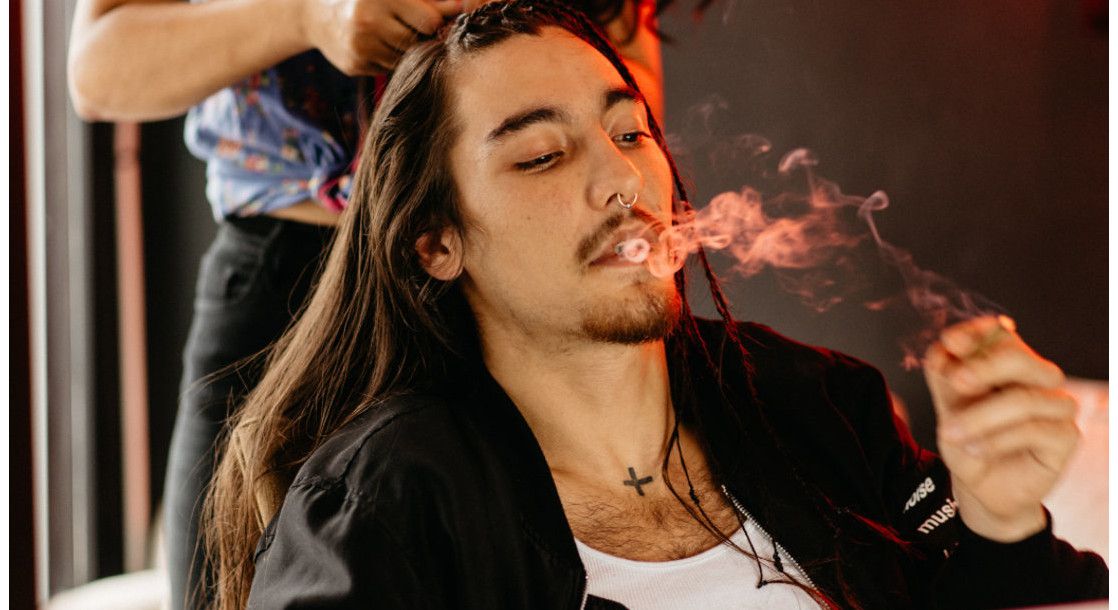Cover image via
A conservative, pro-Drug War political critic scaled the fence of a San Francisco community resource center that has been allowing people to shoot up in an outside fenced area on February 3rd, and was promptly escorted out. According to the SF Chronicle, Michael Shellenberger told the paper that the center —which does not allow journalists on-site — took away his cameras.
“I was in the linkage center monitoring it as is my right as a citizen,” Shellenberger told the newspaper. “I was covering a secret and illegal medical experiment. I was evicted from the site.”
A representative of the Department of Emergency Management—the administering body of the resource center, which was opened under SF Mayor London Breed’s “state of emergency” declared over drug abuse and homelessness issues in the Tenderloin neighborhood—told the Chronicle that a citizen’s arrest had been filed by staff against the intruder.
After reviewing the situation, the San Francisco police department declined to file charges, saying that no criminal offense had been committed.
Author of San Fransicko: Why Progressives Ruin Cities, Shellenberger played a role in breaking the news two weeks ago that the Tenderloin Linkage Center, which was recently opened in response to its neighborhood’s dire addiction and homelessness issues, was allowing attendees to use intravenous drugs in its courtyard.
In an October article he wrote for the NY Post, Shellenberger outlined his opposition to San Francisco’s refusal to require that drug users seek addiction treatment or go cold turkey in order to access subsidized housing and other resources. His plan to curb overdose rates? “… Arrest addicts who break the law, offer drug treatment as an alternative to jail and prison, and make cash and housing for addicts contingent upon drug treatment.” (For those keeping score at home, this has essentially been the United States’ modus operandi since Richard Nixon declared “war on drugs” in 1971. It hasn’t seen great success in ending drug use.)
Shellenberger compared the city’s current, harm reduction-based practice to the horrific, 40-year-long Tuskegee Experiment that began 1930s, in which Black men were unknowingly monitored for having syphilis. Provided with no medical treatment for the disease, 128 ended up dying from syphilis or related conditions before the tragedy was exposed by Associated Press reporter Jean Heller in 1972.
“San Francisco is engaged in an unethical refusal to mandate proven medical treatment to drug addicts that is no different from the denial of medical treatment to syphilis sufferers by US government researchers in Tuskegee, Ala., between 1932 and 1972,” wrote Shellenberger, who rightly notes that Black people (though he reimagines the statistic to pertain only to Black men) are six times more likely to die by accidental overdose in San Francisco.
Regardless of such hyperbole, harm reduction efforts are proven to save the lives of drug users — a wildly important fact in a country clocking record-breaking overdose rates. In New York City, the country’s first two safe injection sites intervened in 114 overdoses in their only six weeks of operation.
Rather ironically given Shellenberger’s bank-robber-like histrionics, many of the city’s harm reduction advocates feel that the Tenderloin Linkage Center’s half-measure to provide decent conditions to drug users does not go far enough. The city has floated various, never-or-half-funded initiatives designed to stem its overdose epidemic, which rose to worrying heights in the first years of the COVID-19 pandemic.
A “drug sobering center” that would have been similar to the two safe injection sites recently opened in New York City found support even with Mayor Breed. A plan dubbed the Compassionate Alternative Response Team would have located community group-guided crews on the street for rapid aid to homeless and/or drug-using San Franciscans.
Follow Caitlin on Instagram, and catch her Spanish-language podcast Crónica on Spotify and Mixcloud.











